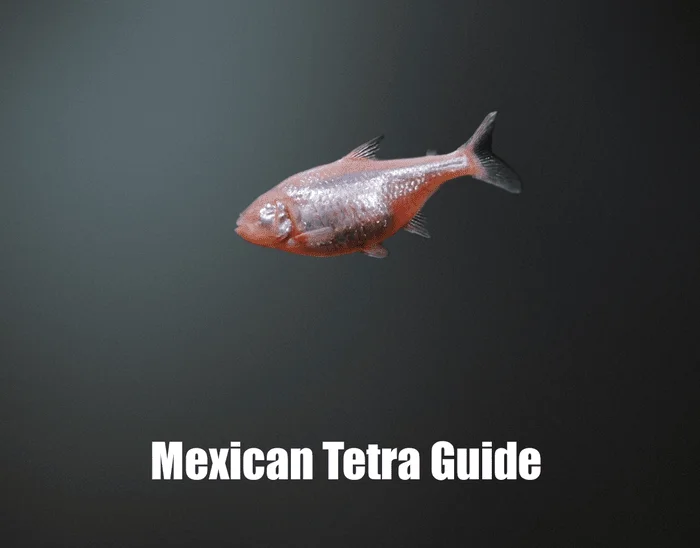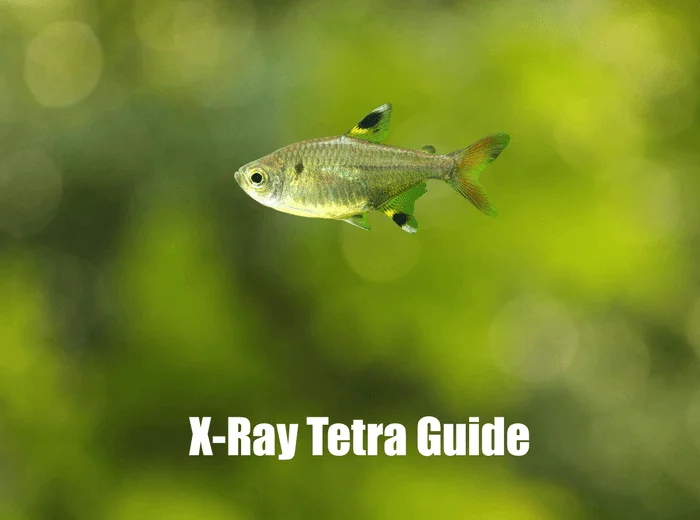Complete Care Guide for Silvertip Tetra: Creating a Shimmering Aquarium

Introduction
Considering Silvertip Tetra for your aquarium or looking to improve their care? This detailed guide is designed for aquarists of all experience levels. Silvertip Tetra, known scientifically as Hasemania nana, are lively Brazilian characins from the São Francisco River basin, admired for their gleaming, bronze-silver bodies and the bright white “tips” on their fins that give them their name. Active, eye-catching, and perfect for planted community tanks, they bring constant motion and sparkle to the mid-water. This guide will cover everything you need to know to help your Silvertip Tetras stay healthy, vibrant, and thriving.
Understanding Silvertip Tetra
Origin and Characteristics
Silvertip Tetra, native to the clear, fast- to moderately flowing streams of the São Francisco River basin in Brazil, are a striking and energetic species in the aquarium hobby. These small fish, usually reaching about 1.5 inches in length, are known for their warm, bronze-gold bodies that catch the light beautifully in a planted tank. Their trademark feature is the bright, silvery-white “tips” on the dorsal, anal, and caudal fins—especially vivid in males—often contrasted by subtle darker edging along the fins. This combination of shimmering body color and crisp fin highlights makes Silvertip Tetras stand out in almost any community aquarium.
The males are especially eye-catching, showing deeper orange-bronze coloration and brighter, more sharply defined silvery fin tips, particularly during courtship and breeding. Silvertip Tetras are generally hardy and adaptable, which makes them appealing to a wide range of aquarists. They are very active mid-water swimmers and prefer to shoal in groups, often seen dashing and chasing one another in short bursts of “sparring” that adds a lively, dynamic feel to the tank. In a suitably sized group and spacious aquarium, this behavior stays social rather than truly aggressive, though they can nip at long, flowing fins if kept with slow, delicate tank mates.
Behavior and Tank Mates
Silvertip Tetra are energetic schooling fish and should be kept in groups of at least eight to spread out their natural sparring behavior and reduce fin-nipping. They work well in community tanks with other similarly sized, fast, and robust species that aren’t burdened with long, flowing fins. While generally peaceful, they’re more boisterous than many other tetras, and their constant mid-water activity adds a lot of movement to the aquarium. Some common and suitable tank mates for Silvertip Tetra include:
- Other Robust Tetras: Such as Black Neon, Glowlight, or Rummy Nose Tetra that can match their activity level.
- Dwarf Cichlids: Like Apistogramma or Bolivian Ram, which mostly stay near the bottom and mid-lower levels.
- Peaceful, Fast Barbs: Such as Cherry Barbs or small, calm barb varieties (avoid fin-nippy or very boisterous species).
- Dwarf Corydoras: Like Pygmy, Panda, or Julii Corys, which are peaceful bottom dwellers and won’t provoke them.
- Small Rasboras and Danios: Harlequin Rasbora or Celestial Pearl Danio, and other quick, schooling species that can keep up with Silvertips.
Remember, when choosing tank mates for Silvertip Tetra, consider water parameters, adult size, temperament, and feeding style to keep the aquarium balanced. Introduce new fish gradually and monitor their interactions—Silvertips are active and can be a bit nippy, so avoid very slow or long-finned species that might be stressed. Aim for companions that are peaceful but quick enough not to be harassed and that won’t outcompete the Silvertips for food. 🐠
Setting Up the Perfect Tank
Tank Size and Conditions
A 20-gallon tank or larger is recommended for a school of Silvertip Tetra but they will benefit from some more swimming room. These Tetra thrive in specific water conditions that mimic their natural habitat. Additionally, maintaining ideal water parameters is the key to ensuring their health and well-being in a home aquarium. Here’s a breakdown of their ideal water conditions:

- Temperature: 72°F to 79°F (22°C to 26°C). This typical tropical range suits Silvertip Tetras well and helps maintain their energy, color, and active schooling behavior.
- pH Level: 6.0 to 7.5, slightly acidic to neutral water conditions. They’re adaptable but do best with stable parameters rather than big swings.
- Water Hardness: Around 2–15 dGH, meaning they tolerate soft to moderately hard water. Aim for the middle of this range for long-term comfort.
- Water Quality: Like most small tetras, Silvertip Tetras need clean, well-oxygenated water. Regular partial water changes (about 25% per week, or smaller changes more often) are recommended. Always remove chlorine and chloramine from tap water before adding it to the tank.
- Nitrate Levels: Keep nitrates as low as practical, ideally below 20 ppm. Lower levels are especially beneficial in heavily stocked or smaller tanks.
- Ammonia and Nitrite Levels: Ammonia and nitrite should always be at 0 ppm. Even trace amounts of these are toxic and can quickly stress or kill Silvertip Tetras.
It’s important to use a reliable aquarium test kit to regularly monitor these water parameters. Sudden changes in water conditions can stress or harm your fish, so any adjustments should be made gradually. Maintaining stable water conditions is key to the health and longevity of your Silvertip Tetra. 🌊
Lighting and Decor
- Moderate Lighting: Mimic their natural, slightly shaded habitat with moderate lighting.
- Day/Night Cycle: Maintain a regular cycle, typically around 10-12 hours of light per day.
- Plants: Dense vegetation, including tall and floating plants, to provide hiding spaces and a natural environment.
- Substrate: A dark-colored substrate can enhance the natural colors of the fish.
- Hiding Places: Include driftwood, rocks, and caves for shelter.
- Open Swimming Space: Ensure ample free-swimming space to accommodate their active swimming behavior.
Diet and Nutrition
Feeding Habits
Silvertip Tetra are omnivorous. Therefore, a balanced diet including high-quality flake foods, frozen or live brine shrimp, daphnia, and occasional vegetable supplements will keep them healthy.
Feeding Schedule
Silvertip Tetras are active, midwater omnivores with healthy appetites and do best on a varied, bite-sized diet. In the aquarium they readily accept high-quality flake or micro pellets, but really come alive when offered small frozen or live foods like daphnia, bloodworms, and brine shrimp. Because they’re fast, competitive feeders, it helps to spread food across the surface or feed in small amounts 2–3 times a day so all fish get a share without overloading the water. A mix of quality prepared foods plus regular frozen or live treats will keep their colors bright and their schooling behavior lively.
Frequently Asked Questions
These small fish, usually reaching about 1.5 inches in length.
In a 20 gallon tank, you can generally keep around 20 inches of fish, considering the “1 inch of fish per gallon” rule, so 10-15 Silvertip Tetra ion a 20 gallon tank with frequent water changes would healthy.
72°F to 79°F (22°C to 26°C). This typical tropical range suits Silvertip Tetras well and helps maintain their energy, color, and active schooling behavior.
Health and Wellness
Breeding Tips
Breeding Silvertip Tetra can be a rewarding experience, but it requires a bit of preparation and understanding of their breeding behavior. Here are some tips to help you successfully breed Silvertip Tetra:
- Breeding Tank: Set up a separate tank with soft, slightly acidic water (pH around 6.0–7.0) and a temperature of about 75–79°F (24–26°C). Use dim lighting and provide fine-leaved plants, moss, or spawning mops, plus a mesh or marbles on the bottom to help protect scattered eggs.
- Identifying and Introducing Breeding Pairs: Choose healthy, mature Silvertip Tetras. Males are more intensely colored, with brighter silvery-white fin tips and a slimmer build, while females are fuller-bodied. Introduce either a well-conditioned pair or one male with one or two females into the breeding tank.
- Condition the Breeders: Feed them plenty of high-quality live and frozen foods (such as daphnia, bloodworms, and brine shrimp) for a week or so to bring them into top spawning condition.
- Spawning Process: Spawning usually takes place in the early morning, with the pair (or group) scattering adhesive eggs among plants or mops while darting and chasing.
- Post-Spawning Care: Once you see eggs, remove the adults promptly to prevent them from eating the eggs. At warm temperatures, the eggs typically hatch in about 24–36 hours.
- Rearing Fry: After the fry absorb their yolk sacs and become free-swimming, start them on infusoria or a commercial liquid fry food. As they grow, gradually introduce newly hatched baby brine shrimp and finely powdered fry foods.
Remember, patience is key when breeding fish. It might take a few attempts before you see success. Keep a close eye on the water parameters and the health of both the adult fish and the fry to ensure a successful breeding experience. Good luck!
Common Health Concerns
Silvertip Tetras are generally hardy, but like other tetras they’re prone to common health issues such as ich (white spot disease), fin irritation from poor water quality, and occasional fungal or bacterial infections. These problems can be especially stressful for Silvertips because of their high activity level and tendency to spar, which can expose small nicks or tears in their fins if conditions are not ideal. Keeping them healthy relies on maintaining excellent tank conditions: regular water changes, stable water parameters (including pH, temperature, and hardness), and good oxygenation, along with a varied, high-quality diet to strengthen their immune systems and help them bounce back quickly from minor stresses.
Additionally, Silvertip Tetras’ preference for clean, slightly acidic to neutral water should be considered when recreating their natural Brazilian stream habitat. Regularly monitor the tank for signs of stress or disease—such as clamped fins, loss of color, or unusual hiding—and act quickly if anything seems off. Early detection and treatment go a long way toward preventing minor problems from becoming serious. By keeping the environment clean and stable, and by understanding the specific needs and more boisterous nature of Silvertip Tetras, you’ll be able to enjoy their full color, constant motion, and lively schooling behavior in your aquarium.
Life Expectancy
With proper care, Silvertip Tetras typically live around 3–5 years in the home aquarium. Consistent monitoring and maintenance of water quality, along with a suitable diet and compatible tank mates, are key factors in supporting their full lifespan.
Silvertip Tetra Wrap Up
In conclusion, Silvertip Tetras bring a flash of bronze shimmer and crisp white fin-tips that can energize almost any freshwater aquarium. By following the guidelines in this care guide, you can create a thriving environment that suits their active, schooling nature and slightly boisterous temperament. These fish, with their constant mid-water motion and engaging social behavior, not only enhance the visual appeal of your tank but also add a lively, dynamic rhythm to your aquatic community. Remember, the foundation of a healthy aquarium is a stable, well-maintained environment. With the right water conditions, a varied, high-quality diet, and regular care, your Silvertip Tetras will continue to flourish and animate your aquarium with their bold color and spirited presence.
Share Your Tetra Experiences
Do you have any stories or tips about your Tetra tank? Share them in the comments below!
Help Others Discover This Guide
Navigate the Tetra in your tank with confidence. This guide is your pathway to creating a vibrant and healthy aquatic showcase. Enjoy the dazzling colors and lively nature of these unique fish!





